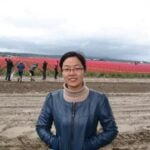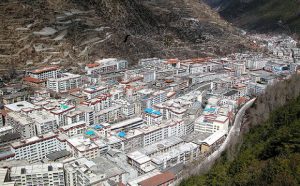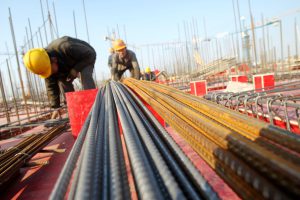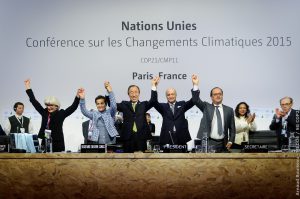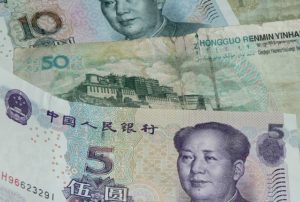Premier Li Keqiang once said urbanisation is a “huge engine” of China’s future economic growth. But since he made these comments four years ago, China’s economic model has shifted. In the context of the ‘new normal’ and emerging environmental revolution, what place does urbanisation have?
In an interview with chinadialogue, Pan Jiahua, director of Institute of the Urban Environment at the Chinese Academy of Social Sciences (CASS), said that Chinese urbanisation will no longer be powered by investment and industrialisation, but rather, by domestic consumption and a new focus on improving people’s quality of life.
Pan believes that in order to create greater social equality, public resources such as education and healthcare, must be more evenly distributed.
As he puts it, “building a university can help an entire city grow.”
From investment to consumption driven
chinadialogue (CD): How has urbanisation been redefined by the 13th Five-Year Plan?
Pan Jiahua (PJH): In the past, urbanisation was a process of expansion, now it’s going to be a process of qualitative improvements. To put it crudely, it used to be a case of building over fields, powered by industrialisation and investment. In the future it will be quality-driven, transforming migrant workers into urban citizens, and using consumption to raise the quality of life in cities.
CD: Why is such a fundamental shift happening?
PJH: We now have the right conditions needed to be more quality-orientated. After decades of development, China’s infrastructure is in many aspects world-leading – we’ve seen the rapid development of roads, railways, subways, and water and electricity supplies. There have been major improvements in education and healthcare and standards of living are higher.
But expansion creates problems after a certain point. In China, it has created a glut in the housing market. We can’t just expand our cities, we need to improve them, and ensure that people are not just a part of urban life but also enjoying the benefits.
CD: How will China’s rate of urbanisation change in the next five years?
PJH: China is changing significantly quicker than the rest of the world. In 2011, the rate of urbanisation was not far off the global average of 53%. By 2015, it had reached 56.1%, putting it at the top of the global mid-range but still low compared to developed nations, where urbanisation has reached 80%.
By 2020, the rate of urbanisation in China will reach 60%, and the number of people who hold urban registration documents will rise to 45%, compared to 39.9% in 2015. The household registration system [or Hukou system] is unique to China. It means many people work in the cities but have rural household registration documents, which means they don’t have access to the same welfare amenities as those registered in cities.
In five years from now, China will have 600 million people who hold urban registration documents. In 2015, that number was 548 million.
CD: Under the ‘new normal’ urbanisation is slowing. How will that affect GDP growth?
PJH: Urbanisation has played an important role in China’s rapid economic development. In the past urbanisation drove investment, it spurred growth in the steel, concrete and transportation sectors. But those investment markets are quite saturated now, and there’s already plenty of housing stock available.
An increase of 1 percentage point in China’s degree of urbanisation means 14 million more people become urban residents. An increase from 56.1% to 60% will mean growth in markets for household appliances, furniture, decorations, and in services such as restaurants.
New urbanisation: putting people first
CD: The 13th FYP talks of a ‘new type of urbanisation’. What’s new about it?
PJH: It puts more focus on people. This is different from the past. Before rural residents moving to the city for work have not had the same benefits as urban residents. Their children can’t attend city schools, access the same healthcare and have to return to their native province to register their household. Children and the elderly get separated and left behind, it’s inhumane. Reforming the household registration system will allow families to become urban citizens.
CD: What have been the other downsides of urbanisation?
PJH: First there are problems with urban development and planning which result in the waste of resources, such as we see in China’s ‘ghost cities’. Second, industrial development in the cities is outstripping environmental capacity, causing problems such as water shortages. Third, the government isn’t fulfilling its role as macroeconomic regulator, leading to problems with the overall distribution of cities and industry.
CD: What can China learn from the developed nations?
PJH: Planning in China could be more scientific and rigorous. Overseas planning tends to be more stable. In China, mayors and Party secretaries have a big say. There’s more public participation in city governance in developed nations, while in China we have a powerful government and the public lack the inclination to get involved, so levels of participation are low.
Fairer access to public resources
CD: The 13th Five-Year Plan called for better balanced urban-rural development, but no more details were given. How do you see that happening?
PJH: There is huge competition among the different city governments. After the Chinese New Year, we saw property prices in first tier cities such as Beijing, Shanghai, Guangzhou and Shenzhen rocket, while in third and fourth tier cities there’s a housing surplus, nobody’s buying. This shows that China’s best resources are concentrated in the big cities. There’s talk now of coordinated development across the Beijing-Tianjin-Hebei region, but if you look at China’s top hundred universities, 21 of them are in Beijing, two in Tianjin, and Hebei doesn’t have a single one.
Look at the US: The University of California, a public university, has ten campuses across the state, it’s not all in one city. The State University of New York is also spread out across the state.
People in Hebei travel to Beijing just to go to see a doctor. Beijing has the best hospitals and every day 700,000 people come to Beijing to seek medical treatment.
Resources get concentrated in provincial capitals, rather than distributed across smaller cities. This is particularly the case with public goods such as healthcare, education and cultural facilities. But these are state goods, not market goods, and their distribution should take national, social and environmental interests into account.
CD: So will better distribution of universities help?
PJH: China needs to reduce poverty. The wisest and most environmentally-friendly way to do that is through education. If the city of Bijie in Guizhou had a good university it would help the local restaurant and service industry grow, and the local level of education would rise. A university makes a city self-sufficient, it makes it able to develop sustainably, and that can promote balanced urban-rural development.
If you moved Tsinghua University to, say, Xibaipo in Hebei, you’d reduce the population of Beijing by half a million and turn Xibaipo into a city. Move it to Tangshan and the professors and students couldn’t ignore the air pollution resulting from the dirty industries there – they’d use their knowledge to make the city better.
Redistribution of public resources involves handling complicated vested interests. At worst it could take a century or two, at best decades. But we need to think in the public interest, in the interests of society.
With contribution from Ma Tianjie.
